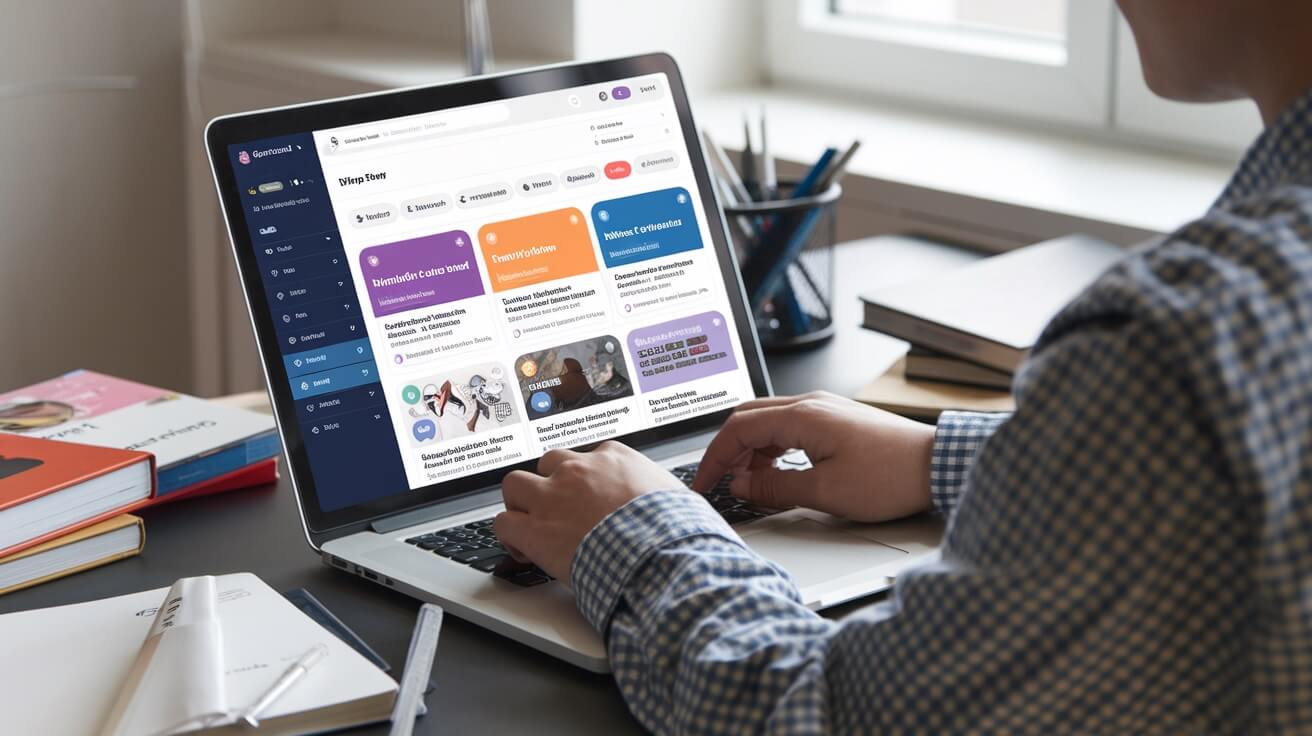
EdTech Tools Every Student Should Know About
Balancing classes, assignments, and extracurriculars can be challenging. Have you ever wished there was an easier way to manage your academic life? You’re not alone. Many students struggle to juggle their responsibilities and find effective ways to study. That’s where educational technology, or EdTech, steps in.
This article will introduce you to some of the best EdTech tools to simplify your studies and improve your learning experience. These tools are designed to help with time management, note-taking, collaboration, and more. By the end of this article, you’ll have a toolkit of apps and platforms that can make your academic journey more manageable and rewarding.
The Evolution of Educational Technology

How EdTech is Changing the Way We Learn
Over the years, technology has become an integral part of education. From digital classrooms to interactive learning apps, the landscape has shifted significantly. Tools like Google Classroom and Khan Academy have revolutionized knowledge delivery, making education accessible to students worldwide.
-
Stat: Studies show that over 85% of students use at least one EdTech tool daily, whether for organizing tasks or completing assignments.
Current Trends in EdTech
-
Personalized Learning with AI: Apps like Duolingo adapt to your progress, tailoring lessons to your pace.
-
Gamification: Platforms such as Kahoot! Turn learning into an engaging game, helping you retain information in a fun way.
-
Immersive Learning: AR (Augmented reality) and VR (virtual reality) tools like Google Expeditions allow you to explore subjects like history or biology in previously unimaginable ways.
EdTech isn’t just a trend—it’s a transformative approach to learning that continues to evolve.
Essential EdTech Tools for Students
1. Time Management and Productivity Tools
Managing your time effectively is critical for academic success. EdTech tools can help you keep track of deadlines and allocate your study hours wisely.
-
Examples: Trello, Todoist, Clockify
-
Why They’re Useful:
-
Trello lets you create boards and checklists to organize tasks.
-
Todoist helps you prioritize assignments with due dates.
-
Clockify tracks how much time you spend on each task, making it easier to improve productivity.
-
Real-Life Example:
- Emma, a high school senior, uses Trello to manage her college application process. She organizes her tasks into boards labeled "To Do," "In Progress," and "Completed," which keeps her on track without feeling overwhelmed.
2. Note-taking and Organization Apps
Taking clear and organized notes is essential for academic success. Fortunately, there are tools to make this easier.
-
Examples: Evernote, OneNote, Notion
-
Why They’re Useful:
-
Evernote allows you to clip articles, jot down ideas, and organize your notes in one place.
-
OneNote offers a digital notebook format, perfect for neatly categorizing lecture notes.
-
Notion provides customizable templates to suit your unique style of learning.
-
Pro Tip:
- Use color-coding in OneNote to differentiate between subjects or highlight key concepts.
3. Study and Revision Platforms
Gone are the days of flipping through countless pages of handwritten notes. EdTech platforms make studying more interactive and efficient.
-
Examples: Quizlet, Anki, Brainscape
-
Features to Love:
-
Quizlet helps you create digital flashcards and practice tests.
-
Anki uses spaced repetition to help you retain information longer.
-
Brainscape’s smart flashcards adapt to your learning speed.
-
Stat:
- Research shows that students who use spaced repetition tools like Anki improve their memory retention by up to 30%.
Personal Story:
- I started using Quizlet in college to prepare for my Spanish exams. The flashcards and interactive tests helped me memorize vocabulary quickly and efficiently.
4. Collaborative Learning Tools
Group projects and collaborations can be a breeze with the right tools.
-
Examples: Google Workspace, Slack, Miro
-
Benefits:
-
Google Workspace allows you to share and edit documents in real time.
-
Slack organizes group communication into channels, eliminating endless email chains.
-
Miro’s visual collaboration tools are perfect for brainstorming sessions.
-
Real-Life Example:
A group of MBA students used Miro to collaborate on a business plan. Despite being in different time zones, they completed their project on time.
How to Choose the Right EdTech Tool

Factors to Consider
-
Your Learning Style: Visual learners might prefer Notion’s clean templates, while auditory learners could benefit from Otter.ai, which transcribes lectures.
-
Device Compatibility: Ensure the tool works seamlessly for seamless access.
-
Features vs. Budget: Many free tools, like Google Workspace, offer robust features, but paid versions, like Grammarly Premium, can add extra value.
Free vs. Paid Tools
While free tools are great for getting started, premium versions often unlock advanced functionalities. For example:
-
Free Option: Evernote’s basic tier is perfect for simple note-taking.
-
Paid Upgrade: Grammarly Premium provides advanced grammar and style suggestions, beneficial for essays and reports.
Benefits of Using EdTech Tools
-
Improved Learning Efficiency: Tools like Clockify ensure you focus on high-priority tasks.
-
Enhanced Collaboration: Google Workspace and Slack make group work more manageable and efficient.
-
Personalized Learning: Platforms like Duolingo and Khan Academy tailor content to your learning pace and style.
Challenges and How to Overcome Them

Common Issues
-
Distractions: Notifications can derail your focus.
-
Overwhelm: Navigating complex tools can feel daunting.
Solutions
-
Turn on Focus Mode in apps to block notifications while studying.
-
Start with essential features and explore more advanced options as you become comfortable.
Real-Life Success Stories
High School Success:
A high school junior, Alex struggled with history until he started using Quizlet. He boosted his test scores by 15% by creating custom flashcards and practicing daily.
College Collaboration:
A team of engineering students used Slack to manage their capstone project. By creating separate channels for tasks like research, design, and deadlines, they streamlined their workflow and completed the project two weeks early.
FAQs About EdTech Tools
-
What are the best free EdTech tools?
-
Tools like Google Classroom, Evernote, and Canva for Education offer excellent features without costing a dime.
-
How can EdTech improve my academic performance?
-
By streamlining tasks, improving organization, and enhancing study methods, EdTech tools help you study smarter, not harder.
-
Are there tools for specific learning styles?
-
Yes! Visual learners may enjoy Notion, while auditory learners can benefit from Otter.ai’s transcription services.
-
Can these tools help with group projects?
-
Absolutely. Google Workspace and Slack are perfect for seamless communication and collaboration.
-
What’s the easiest way to get started with EdTech?
-
Choose one tool that addresses your most significant challenge—like Todoist for time management—and use it consistently.
Conclusion
EdTech tools are more than just apps; they’re your partners in achieving academic success. Whether you need help managing your time, organizing notes, or working with peers, there’s a tool for you. Start with one recommendation from this list, and see how it transforms your learning experience.
Remember, technology is here to help you—not replace your hard work. Explore these tools, experiment, and find what works best for you. Success is just a click away!
Digital Learning




